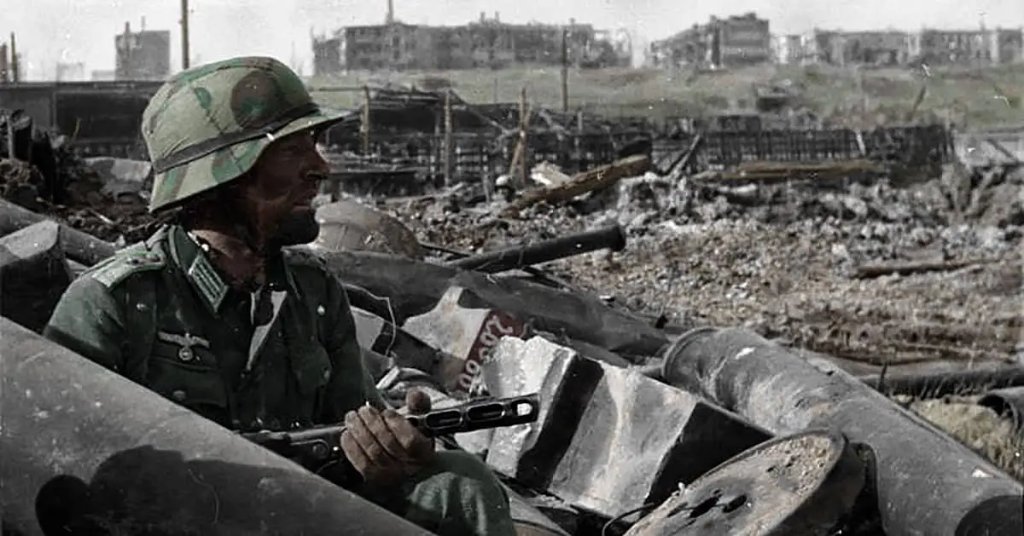Let’s be clear — all battles suck for a foot soldier, even the smaller ones. But there were some in recent times that sucked more than others for the lowly grunt, with body counts piling up, bad commanders and leadership with a total lack of respect for the lives of their men.
Here is a partial list of five of the worst modern battles to be a bottom-of-the-barrel foot soldier
1. The Battle of Kiev, 1941

The Battle of Kiev lasted from August 23 – Sept. 26, 1941. The German army, led by Fedor von Bock, Gerd von Rundstedt, and the famed Heinz Guderian, continued their spearhead towards Moscow but Hitler reconsidered.
Instead, he ordered Bock, von Rundstedt, and Guderian to focus their attack on the city of Kiev. The total amount of German forces heading towards Kiev numbered a little over 500,000. The reason for this was that Kiev was third largest city with a large concentration of Soviet forces with likely more than 627,000 Red Army troops facing the German onslaught.
How bad was it? In order to crush the Soviets in Kiev, the Germans were forced to systematically reduce the pockets of resistance. In other words, the Germans had to work at making each line (pockets of resistance) buckle and break.
Because of this, the fighting was unsurprisingly up close and personal. The total number of dead were 127,000 Germans and 700,544 Soviets — that’s over 800,000 killed in the battle for Kiev.
2. The Battle of Verdun, 1916

The Battle of Verdun lasted from Feb. 21 – Dec. 18, 1916, between the armies of France and the German Empire. Located in northeastern France, when the battle of Verdun kicked off, 30,000 French soldiers faced 130,000 German soldiers. Seeing that 30,000 troops were not enough, the French bolstered their forces to a staggering 1.1 million men. The Germans countered this by delivering 1.25 million troops.
The horrors of such a battle need little explanation. All one has to do is look at the photos of the battle site. World War I was a war in which the technology outpaced the tactics and strategies. Because of this, war came to a near standstill as men were mowed down by machine guns and blown to pieces by artillery fire on a daily basis.
If that wasn’t enough, living in the trenches was another misery all its own. Here’s a testimony.
A German soldier writes to his parents:
An awful word, Verdun. Numerous people, still young and filled with hope, had to lay down their lives here – their mortal remains decomposing somewhere, in between trenches, in mass graves, at cemeteries…
In total, the French would lose upwards of 500,000 troops while the Germans lost in some estimates more than 400,000 — nearly 1 million killed on both sides.
3. The Siege of Leningrad, 1941-1944

The siege of Leningrad lasted from Sept. 8 1941 – Jan. 27, 1944. The German army surrounded the city with 725,000 troops and began an on-and-off bombardment and assault of the city which was defended by 930,000 Soviet soldiers.
While the Germans made little advancement into the city, mainly controlling the outskirts, they were effective in starving the city to near death.
While war is indeed hell, the Germans suffered from the typical day-to-day engagements as did the Soviet soldiers. However, the people of the city suffered the worst. Due to the limited amount of supplies, many people ate whatever they could get their hands on, even people.
Once the siege lifted, the Germans suffered 579,985 casualties while the Soviets lost 642,000 during the siege and another 400,000 at evacuations.
4. The Battle of Stalingrad, 1942-1943

The battle of Stalingrad lasted from August 23, 1942 – Feb. 2, 1943. Initially, the Germans besiege the city with 270,000 troops. But by the time the siege was lifted, the Germans army had swelled to 1,040,000 men.
The Soviets at first only had 187,000 personnel to defend the city, but by the time of the counteroffensive, more than 1.1 million troops were on the move.
The horrors of Stalingrad were an outgrowth of the hellish street-to-street and building-to-building fighting. Not to mention the many horrors both sides witnessed and committed.
Red Army Maj. Anatloy Zoldatov, recalled:
The filth and human excrement and who knows what else was piled up waist-high. It stank beyond belief. There were two toilets and signs above them both that read: No Russians allowed.
In total, the Germans would lose 734,000 killed, wounded and missing, while the Russians lost 478,741 killed and missing and another 650,878 wounded or sick.
5. The Battle of Berlin, 1945

The battle of Berlin ran from April 16 – May 2, 1945. The Germans had only 766,750 soldiers on hand to defend the city against 2.5 million Soviet soldiers. The result was a decisive Soviet victory that would lead to Germany’s surrender on May 7, 1945.
As for the horrors of the battle, many German citizens — including children — were forced to defend the city. Of course, this was the norm when the situation grows dire.
Like Stalingrad, the fighting in Berlin would be from street-to-street and building-to-building. However, the German army, like its people, were depleted from years of war and had 2.5 million angry Soviets kicking their door in.
Once Berlin was theirs, the pillaging began. In total, the Germany army lost 92,000–100,000 troops while the Soviets lost 81,116.


